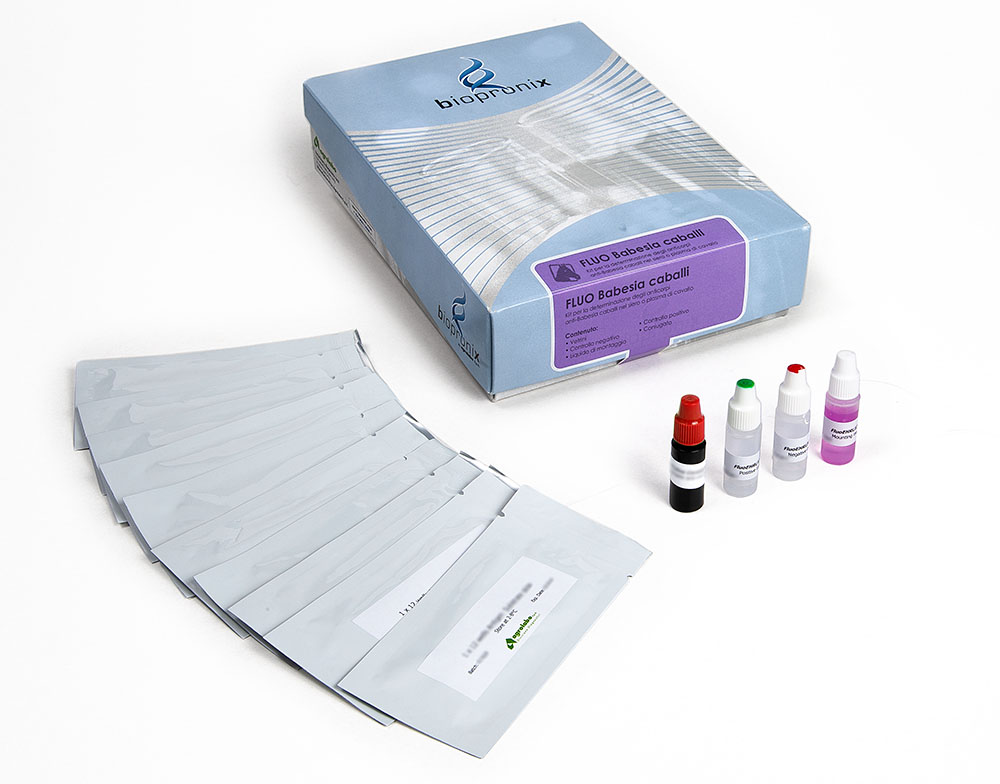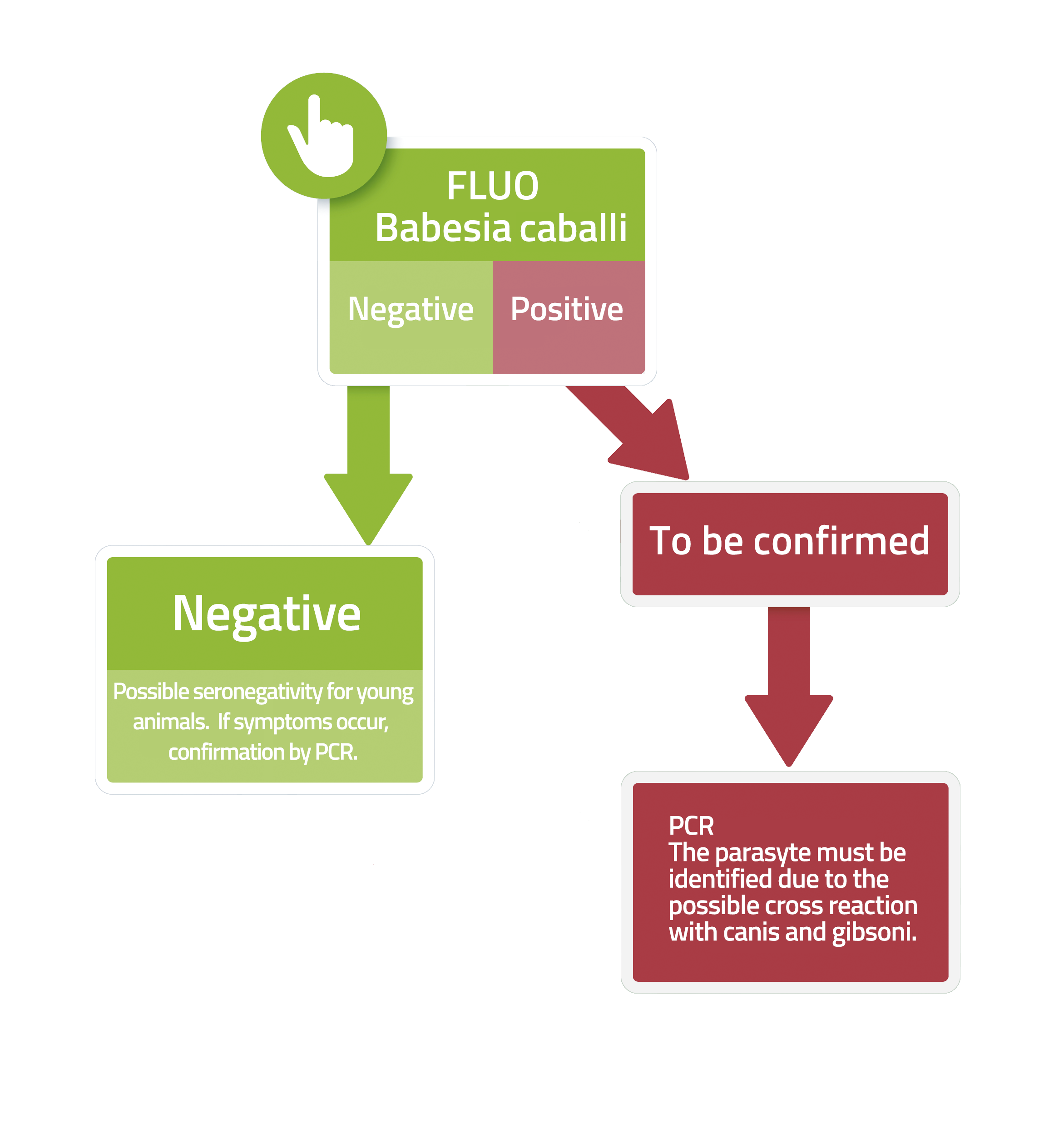FLUO BABESIA caballi
IFA kit for the detection of anti-Babesia caballi IgG antibodies
Fluo BABESIA caballi is a test based on the immunofluorescence technique for the detection of IgG antibodies to Babesia caballi in horse serum or plasma samples.
Babesia caballi is a protozoan that causes equine piroplasmosis. The disease is vector-transmitted through inoculation by ticks, but it can also be iatrogenic. The disease is widespread even if there are some free areas (Australia, USA, Canada, Japan, Great Britain and Ireland), but it is found with increasing frequency. The disease, whose cycle is linked to that of ticks, is seasonal, mainly spring.
Babesia protozoa are intracellular parasites that localize in red blood cells, causing them to rupture with consequent anemia. The clinical forms can be acute, subacute or chronic, the latter often presenting in an inapparent form. Very frequently there is also an asymptomatic form that manifests itself clinically only following stress. The horse is therefore a healthy carrier of the disease and remains so for long periods or for life. The occurrence of one of the three forms depends on previous contacts with the parasite.
Babesia caballi penetrates and multiplies within the erythrocytes leading to erythrolysis and anemia. It has an incubation period of 1-3 weeks, the symptoms of the clinical form are: severe hyperthermia, anorexia, congestion of the mucous membranes, polypnea and tachycardia; then haemolytic anemia, jaundice and hemoglobinuria occur. These classic acute forms lead to death in 8-10 days in the absence of therapy. The subacute and chronic forms, on the other hand, manifest themselves with milder symptoms, generally characterized by fluctuating fever and permanent anemia, depression and poor performance. Colic syndromes can occur.
In suspicion of piroplasmosis it is very important to distinguish the species Theileria equi and Babesia caballi, among them, because Theileria equi induces more serious infections and is more resistant to treatments, even if co-infection is often possible.

